Fibrosis After Surgery: Top Prevention Tips

Let's be real – nobody warns you about fibrosis when you're planning surgery. You're focused on the results, the recovery timeline, maybe the pain management. But then weeks later, you're dealing with hard, lumpy tissue that wasn't part of the plan.
Here's the thing: fibrosis after surgery is incredibly common, but it's not inevitable. With the right knowledge and approach, you can stack the odds in your favor for smooth, beautiful healing.
What Is Fibrosis After Surgery?
Fibrosis is your body's overzealous attempt at healing. Think of it as scar tissue on steroids – instead of forming neat, organized repair tissue, your body goes into overdrive and creates thick, fibrous tissue that can feel hard, lumpy, or rope-like under your skin.
This isn't just a cosmetic issue (though it absolutely affects how you look and feel about your results). Fibrosis can:
-
Create permanent texture changes
-
Cause ongoing discomfort or tightness
-
Limit your range of motion
-
Make you feel like your surgery "failed"
You're not being dramatic if fibrosis is bothering you. It's a legitimate complication that deserves attention and action.
Understanding Seromas: Fibrosis's Partner in Crime
Seromas often team up with fibrosis to make your recovery more complicated. A seroma is a pocket of fluid that builds up under your skin after surgery – think of it as your body's way of filling the empty space left behind.
While small seromas often resolve on their own, larger ones can:
-
Increase your risk of developing fibrosis
-
Delay healing
-
Create that "sloshing" feeling under your skin
-
Require drainage procedures
The connection between seromas and fibrosis is frustrating but predictable: fluid buildup creates inflammation, inflammation triggers excessive scar tissue formation, and excessive scar tissue becomes fibrosis.
What Causes Fibrosis After Surgery?
Understanding why fibrosis happens gives you power to prevent it. Here are the main culprits:
Inflammation Gone Wrong
Your body's inflammatory response is supposed to heal you, but sometimes it doesn't know when to stop. Chronic inflammation keeps signaling for more collagen production, leading to thick, disorganized scar tissue.
Poor Blood Flow
Areas with compromised circulation struggle to deliver the nutrients needed for healthy healing. This forces your body to compensate with less-than-ideal tissue repair.
Genetic Factors
Some people are simply more prone to excessive scar formation. If you tend to develop keloids or thick scars, you're at higher risk for post-surgical fibrosis.
Surgical Technique and Trauma
More extensive procedures, revision surgeries, or techniques that create significant tissue trauma increase fibrosis risk. This isn't about "bad" surgery – it's about biological reality.
Lifestyle Factors
Poor nutrition, smoking, dehydration, and inadequate rest all compromise your body's ability to heal properly, making fibrosis more likely.
The Hidden Risk Factors Nobody Talks About
Beyond the obvious causes, certain factors significantly increase your fibrosis risk:
Oxidative Stress
When your body produces more free radicals than it can neutralize, cellular damage accumulates. This creates an environment where abnormal healing thrives.
Nutrient Deficiencies
Your body needs specific building blocks for healthy tissue repair. Missing key nutrients like vitamin C, zinc, or amino acids forces suboptimal healing patterns.
Hormonal Imbalances
Hormones directly influence collagen production and tissue remodeling. Imbalances can tip the scales toward excessive scar formation.
Previous Infections or Complications
Any disruption to normal healing creates a cascade of inflammatory responses that can persist long after the initial problem resolves.
Prevention Strategies That Actually Work
Here's where hope enters the picture. You have more control over fibrosis prevention than most people realize.
Optimize Your Nutrition Foundation Your body can't build healthy tissue without the right raw materials. Focus on:
-
High-quality protein for tissue repair
-
Anti-inflammatory omega-3 fatty acids
-
Antioxidant-rich fruits and vegetables
-
Adequate hydration for cellular function
Master Your Movement
Gentle, appropriate movement encourages healthy tissue formation and prevents adhesions. This doesn't mean hitting the gym – it means following your surgeon's mobility guidelines religiously.
Sleep Like Your Results Depend on It Because they do.
Growth hormone, released during deep sleep, is crucial for tissue repair and remodeling. Poor sleep directly correlates with poor healing.
Manage Stress Aggressively
Chronic stress elevates cortisol, which impairs immune function and promotes inflammation. This isn't just feel-good advice – it's biological necessity.
The Role of Anti-Inflammatory Foods in Prevention
Food is medicine, especially when you're healing. Certain foods actively combat the inflammatory processes that lead to fibrosis.
Powerful Anti-Inflammatory Players:
Ginger:
Contains compounds that directly inhibit inflammatory pathways
Turmeric:
Curcumin reduces inflammatory markers and supports healthy collagen formation
Leafy greens:
Packed with antioxidants that neutralize free radicals
Fatty fish:
Omega-3s actively resolve inflammation rather than just suppressing it
Foods to Limit:
-
Processed foods high in trans fats
-
Excess sugar, which promotes inflammation
-
Refined carbohydrates that spike blood sugar
-
Excessive alcohol, which impairs healing
The goal isn't perfection – it's progress. Small, consistent changes in your diet can have profound effects on your healing trajectory.
Your Secret Weapon: The Anti-Fibrosis Sage Mocktail
This isn't just another pretty drink – it's a functional beverage designed to fight fibrosis from the inside out.

10 min
1
Mocktail
United States
Ingredients
- 1/2 c water
- 1/4 c ginger beer or ale
- 1 lime, sliced
- 5 sage leaves
- 1 tbsp honey
- 4 blackberries
Directions
Step 1
Create a Sage Syrup: Mix water and honey and sage in a pan. Simmer for 3 minutes. Or place in microwavable cup for 3 minutes.
Step 2
Allow syrup for chill for 1-2 minutes. Stir.
Step 3
Add ice cubes to large glass. Pour ginger beer or ginger ale in glass.
Step 4
Slowly pour in sage syrup into ginger beer. Stir.
Step 5
Stir or shake well.
Step 6
Garnish with lime and blackberries.
Why This Combination Works:
Sage contains powerful antioxidants that combat oxidative stress – a key driver of fibrosis formation.
Ginger provides potent anti-inflammatory compounds that help regulate your body's healing response.
Blackberries deliver anthocyanins, which support healthy collagen formation and reduce inflammation.
Lime adds vitamin C, essential for proper collagen synthesis.
Honey provides gentle sweetness plus antimicrobial properties that support overall healing.
This mocktail addresses multiple pathways involved in fibrosis development: reducing oxidative stress, controlling inflammation, and supporting healthy tissue formation.
Other Natural Approaches to Consider
Comprehensive Nutritional Support
Sometimes food alone isn't enough, especially when your body is working overtime to heal from surgery. Before + After Vitals is a NutriSurgical powder that provides a scientifically-formulated approach to preventing post-surgical complications like fibrosis.
This 8-in-1 powder combines protein, collagen, amino acids, vitamins, minerals, probiotics, prebiotics, and digestive enzymes in one scoop, addressing multiple pathways that contribute to healthy healing.
Key Benefits for Fibrosis Prevention:
Collagen Support:
Essential building blocks for proper tissue repair, reducing the likelihood of excessive scar tissue formation
Anti-inflammatory Nutrients:
Help control the inflammatory response that can spiral into fibrosis
Protein & Amino Acids:
The fundamental building blocks your body needs for healthy tissue regeneration
Probiotics:
Support gut health, which directly influences systemic inflammation levels
Real Results:
Based on post-operative surveys, 79% of users reported beautiful incision healing and 85% experienced faster recovery, suggesting this comprehensive nutritional approach may help prevent complications like fibrosis.
Integration with Natural Remedies:
The powder dissolves easily into the sage mocktail or other beverages, creating a multi-pronged approach to post-surgical healing that's both convenient and effective.
Manual Lymphatic Drainage
Professional lymphatic massage helps move fluid and reduce the stagnation that contributes to fibrosis. Start gentle and work with someone experienced in post-surgical care.
Stress Management Techniques
Chronic stress is fibrosis fuel. Find what works for you:
-
Meditation or mindfulness practices
-
Gentle yoga or stretching
-
Deep breathing exercises
-
Regular connection with supportive people
Red Flags: When to Seek Medical Attention
Trust your instincts. Seek professional help if you experience:
Immediate Concerns:
-
Severe pain that's getting worse, not better
-
Signs of infection (fever, redness, warmth, unusual drainage)
-
Sudden swelling or changes in your surgical site
Ongoing Issues:
-
Hard, rope-like tissue that's not improving after 6-8 weeks
-
Significant asymmetry that wasn't present initially
-
Limited range of motion that's interfering with daily activities
-
Emotional distress about your healing progress
Don't wait for problems to resolve on their own. Early intervention almost always leads to better outcomes.
The Reality Check: Healing Takes Time
Here's some tough love wrapped in compassion: healing is not linear, and it's rarely as fast as we want it to be.
Your scar tissue continues remodeling for up to a year after surgery. What feels hard and concerning at 6 weeks might be perfectly normal tissue that just needs more time to soften and settle.
But this doesn't mean you should ignore problems or avoid proactive care. There's a difference between normal healing progression and developing complications.
Trust the process, but stay actively involved in your recovery. Your body is working hard for you – support it with good nutrition, appropriate movement, adequate rest, and professional guidance when needed.
Your Action Plan Starting Today
Ready to take control of your healing? Here's your roadmap:
Week 1-2 Post-Surgery:
-
Focus on nutritional supplementation and hydration
-
Follow all post-operative instructions religiously
-
Begin gentle movement as cleared by your surgeon
-
Incorporate anti-inflammatory foods
-
Introduce the sage mocktail as a daily ritual
Week 3-6:
-
Continue comprehensive nutritional support
-
Begin gentle massage or lymphatic drainage if cleared
-
Monitor your healing progress objectively
Week 6+:
-
Assess your tissue quality and healing progression
-
Address any concerning areas with your surgical team
-
Continue nutritional support and anti-inflammatory practices
The Bottom Line
Fibrosis after surgery feels scary and overwhelming, but you're not powerless against it. Every choice you make – from what you eat to how you move to how you manage stress – influences your healing trajectory.
The sage mocktail isn't magic, and neither is any single intervention. But when you combine smart nutrition, targeted supplementation, appropriate movement, and professional guidance, you create an environment where healthy healing thrives.
Your body wants to heal beautifully. Sometimes it just needs the right support to remember how.
Remember, you deserve to feel confident and comfortable in your skin. Don't settle for "good enough" when it comes to your healing. Be your own advocate, stay informed, and never hesitate to seek help when you need it.
Your future self will thank you for every proactive step you take today.
Important Medical Disclaimer
This content is provided for educational and informational purposes only and should never be considered a substitute for professional medical advice, diagnosis, or treatment. Every person's surgical experience and healing process is unique, influenced by factors including the specific procedure performed, individual health status, age, genetics, and adherence to post-operative care instructions.
The mention of specific products, supplements, treatments, or techniques in this article does not constitute medical advice or professional endorsement. Always consult with your healthcare providers before starting any new supplements, treatments, or significant changes to your recovery routine, as these may interact with prescribed medications or interfere with your healing process.
Before + After Vitals
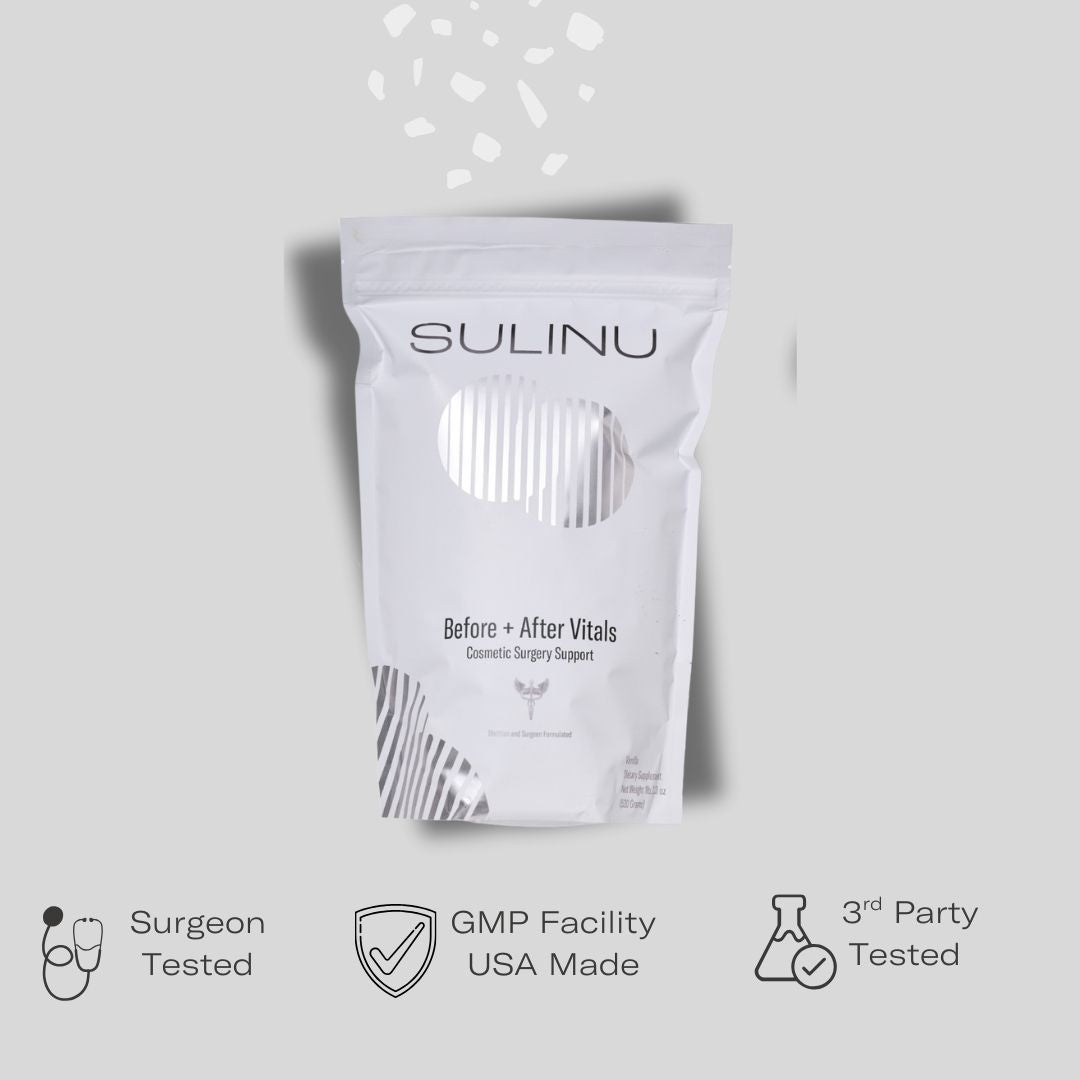
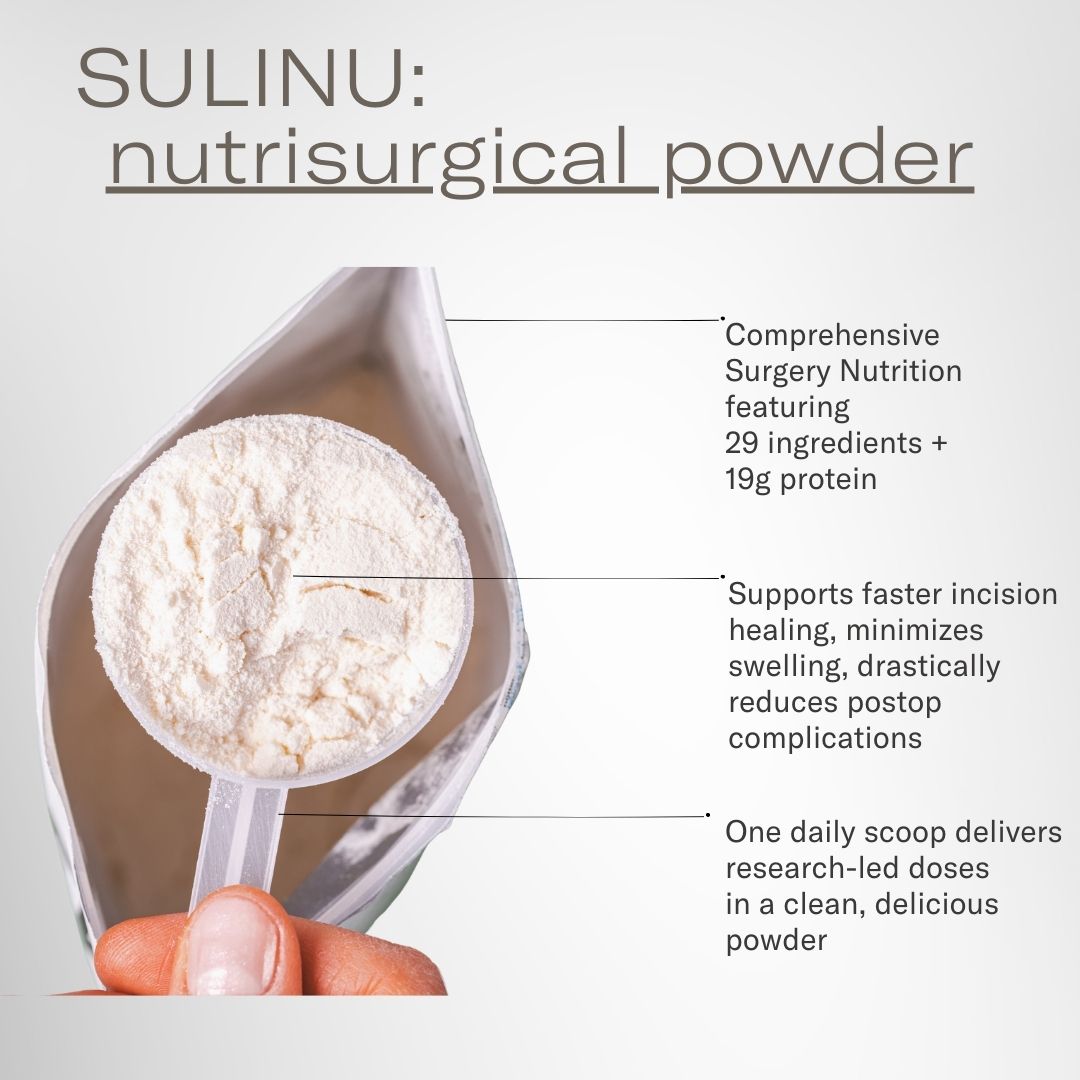
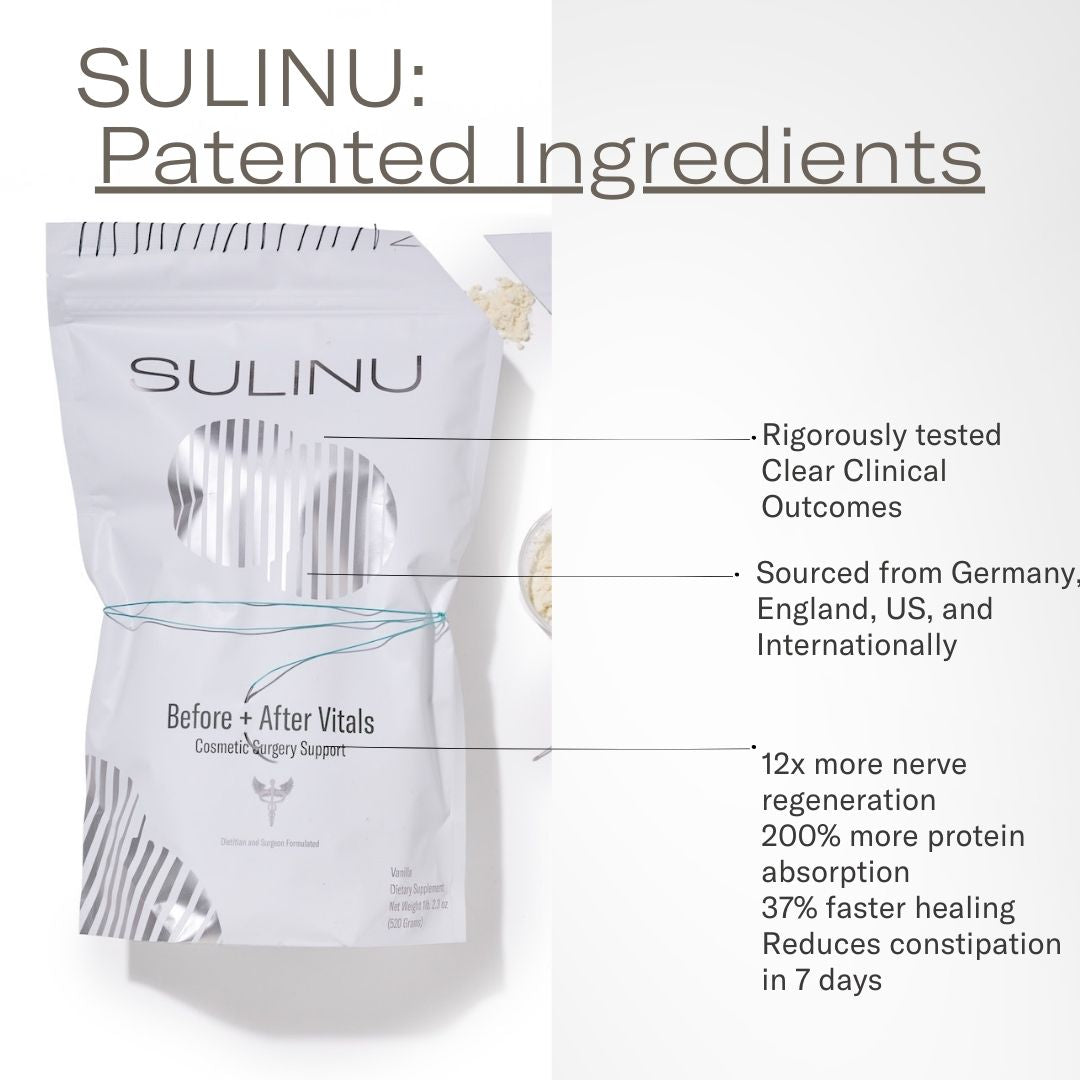
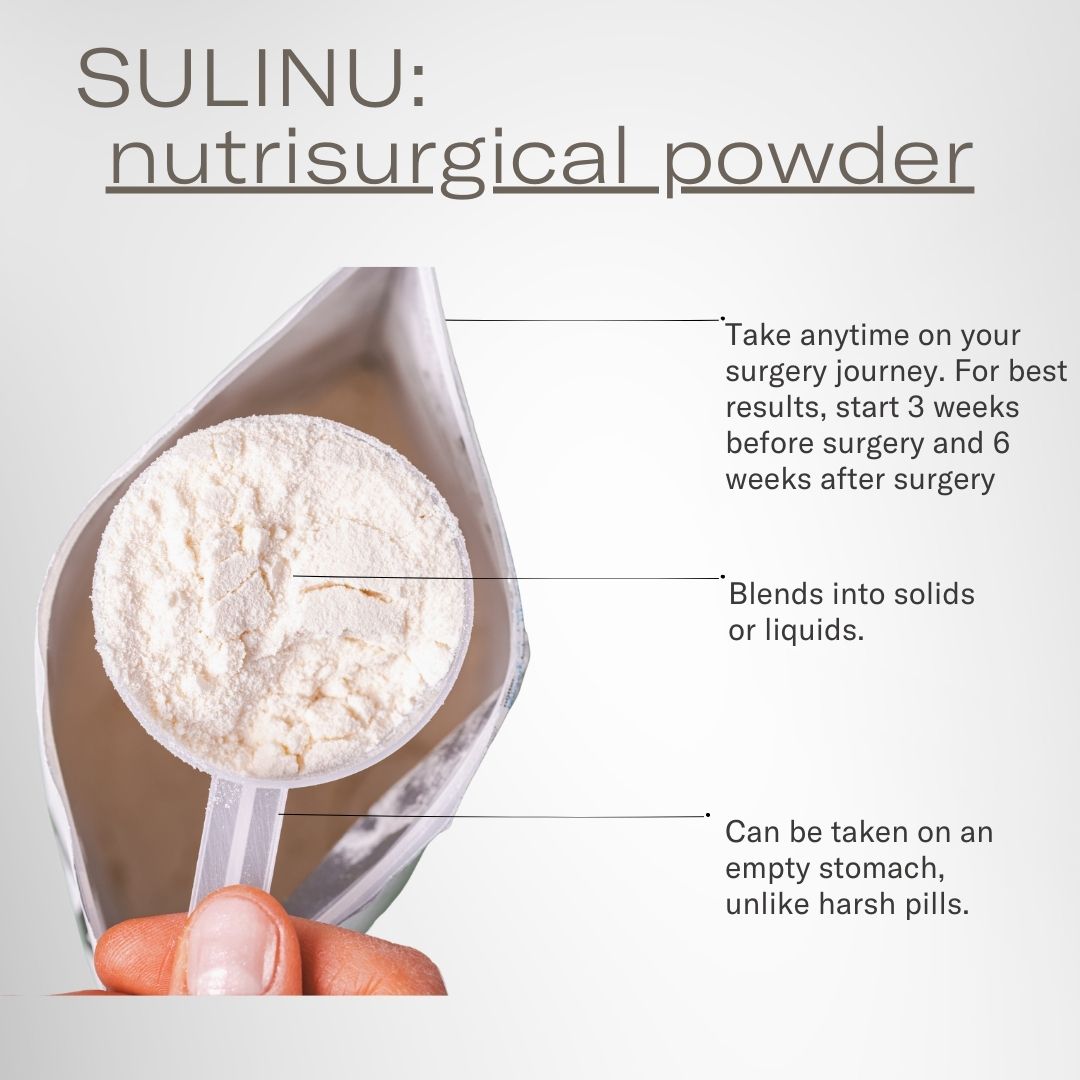

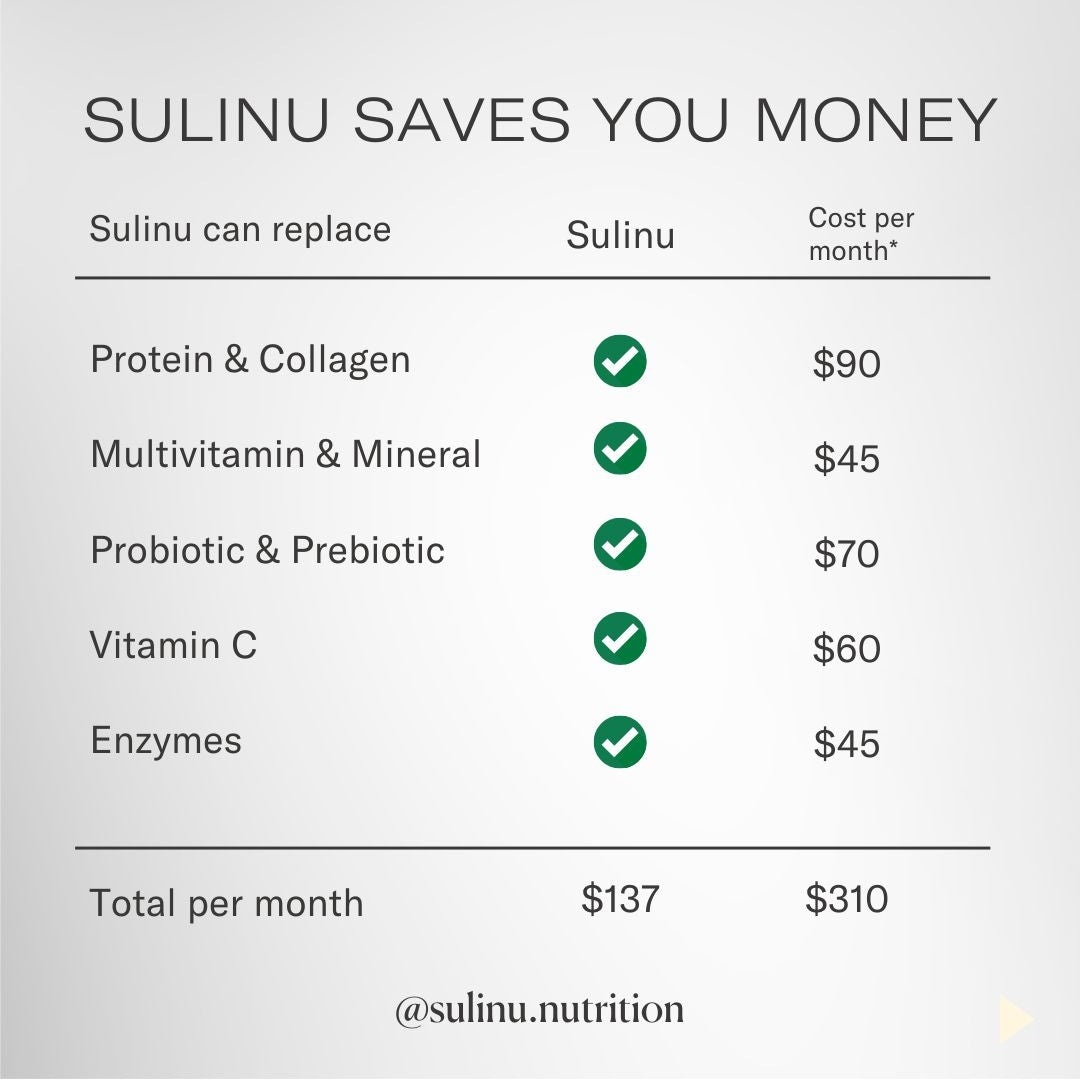

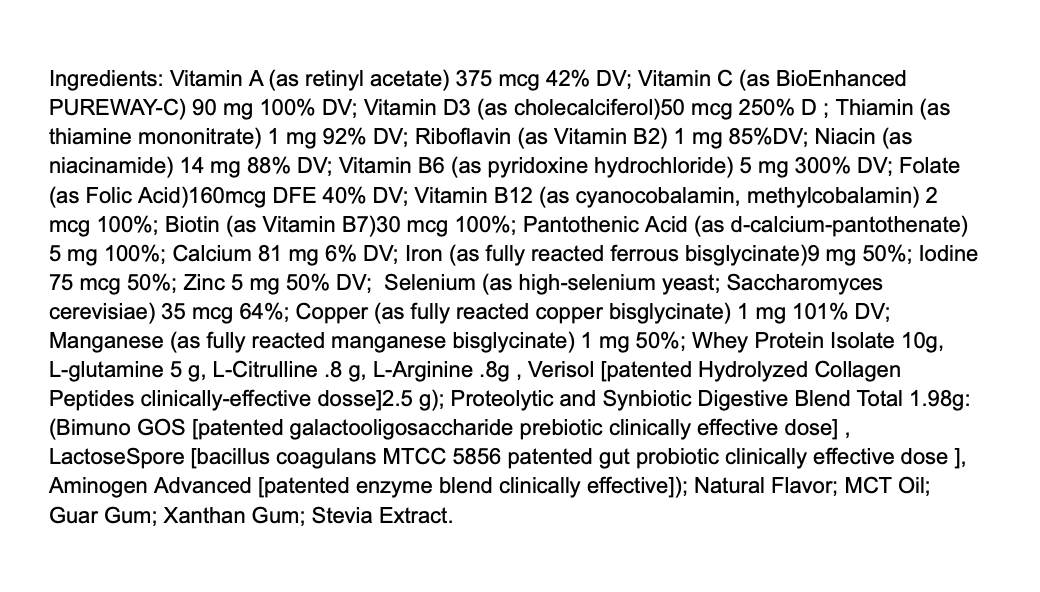
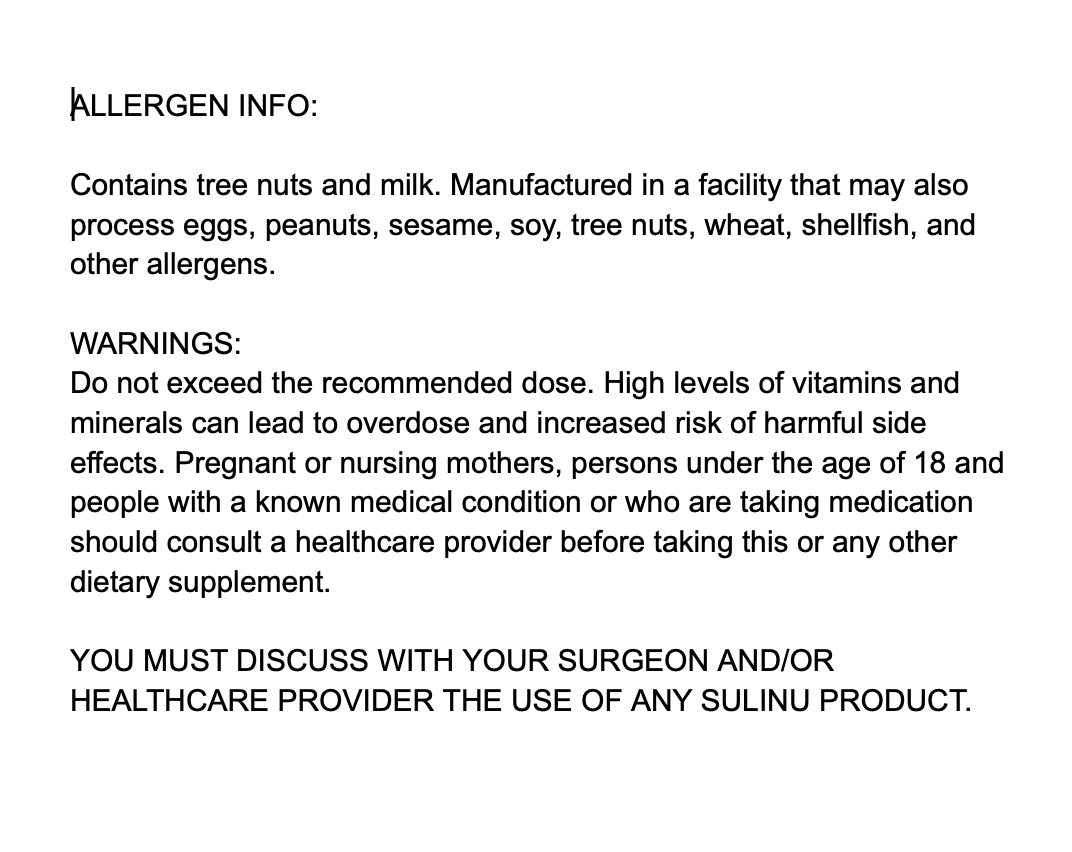


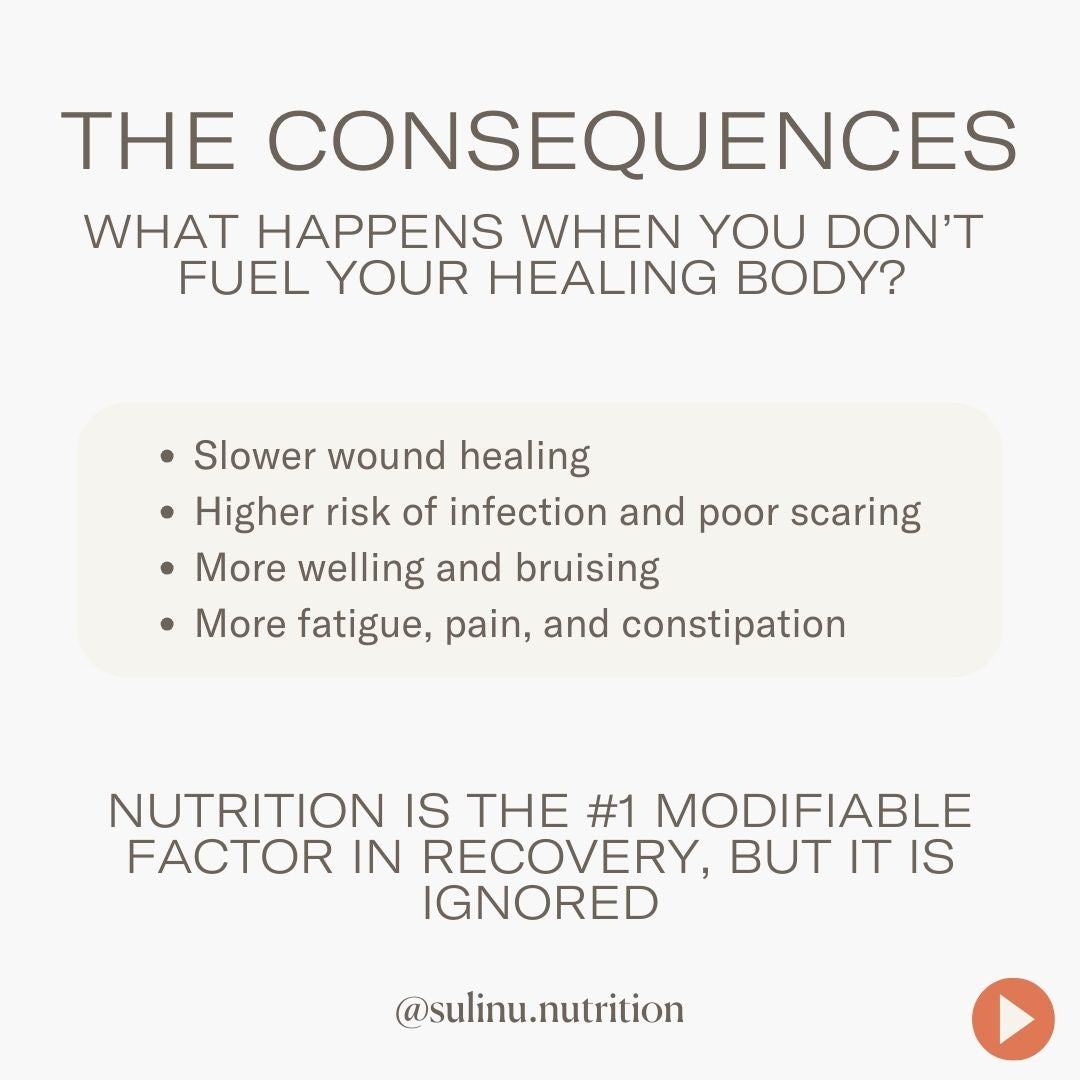
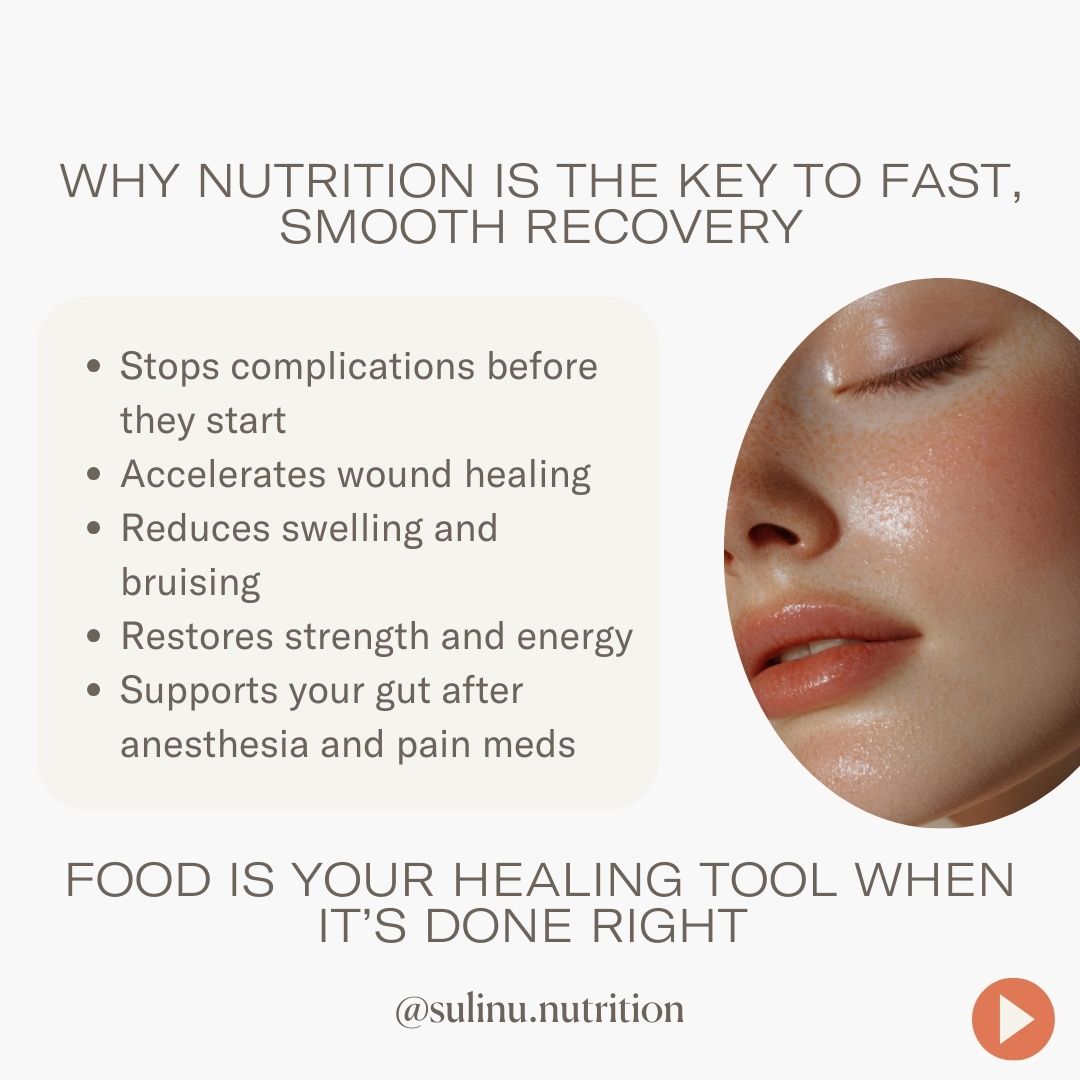
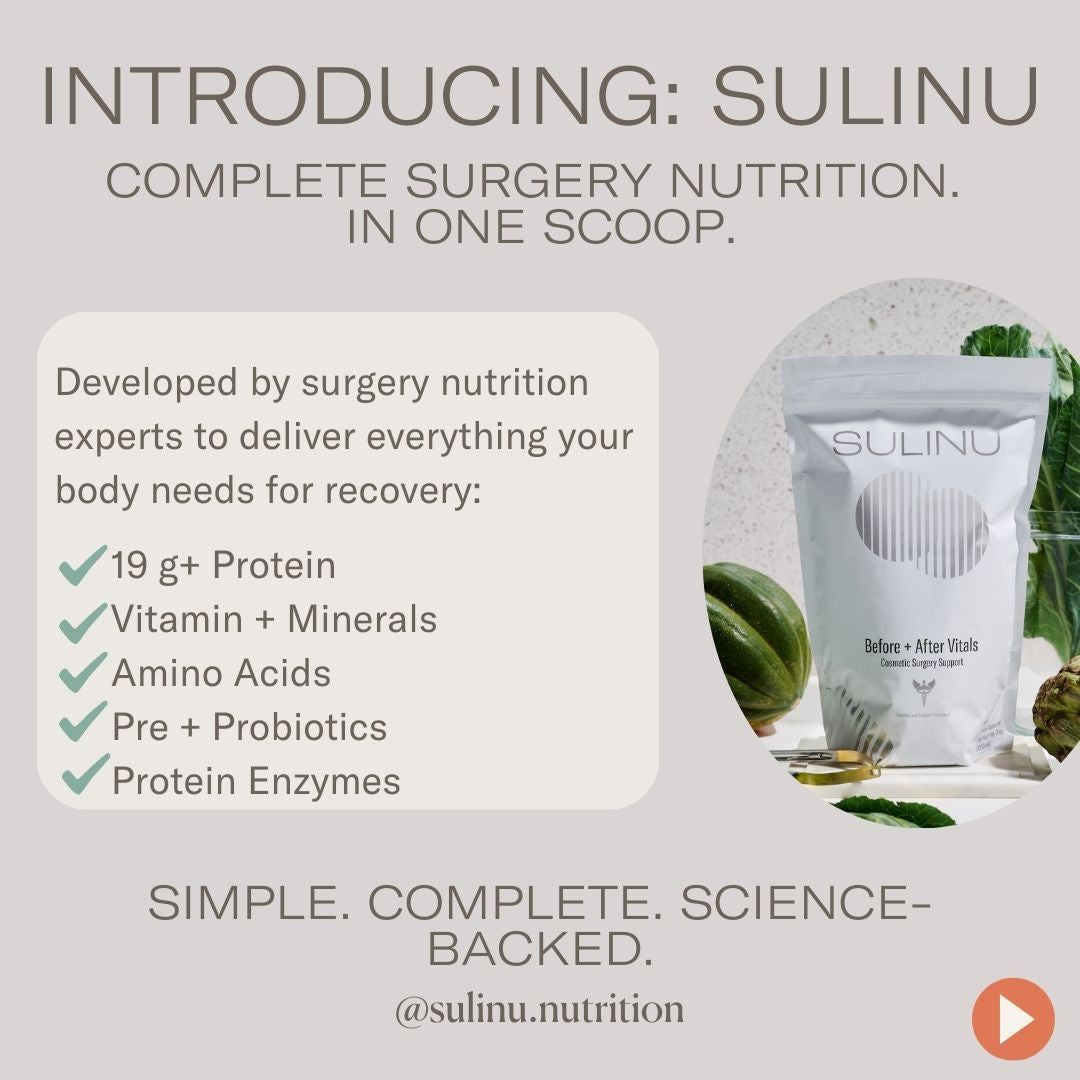
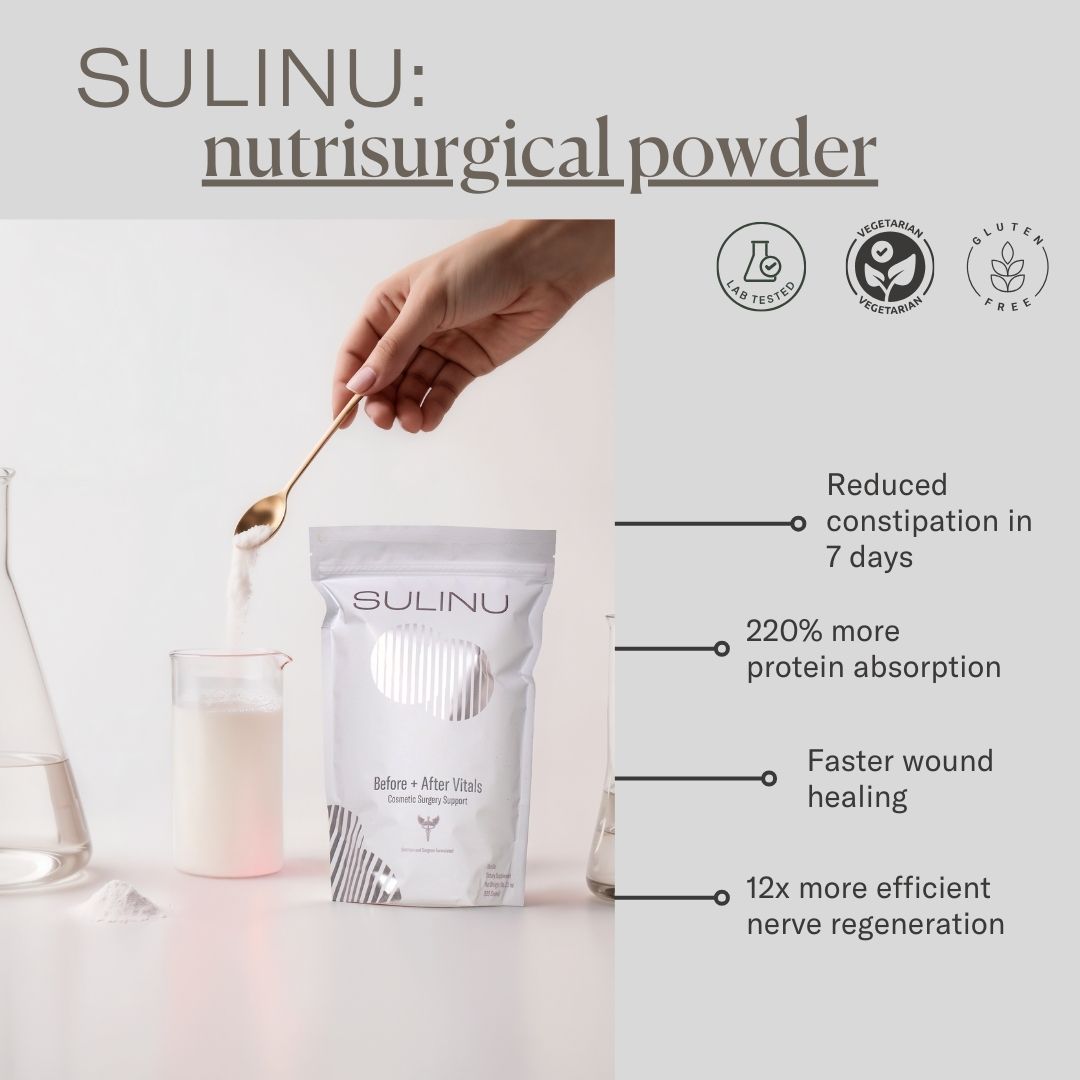
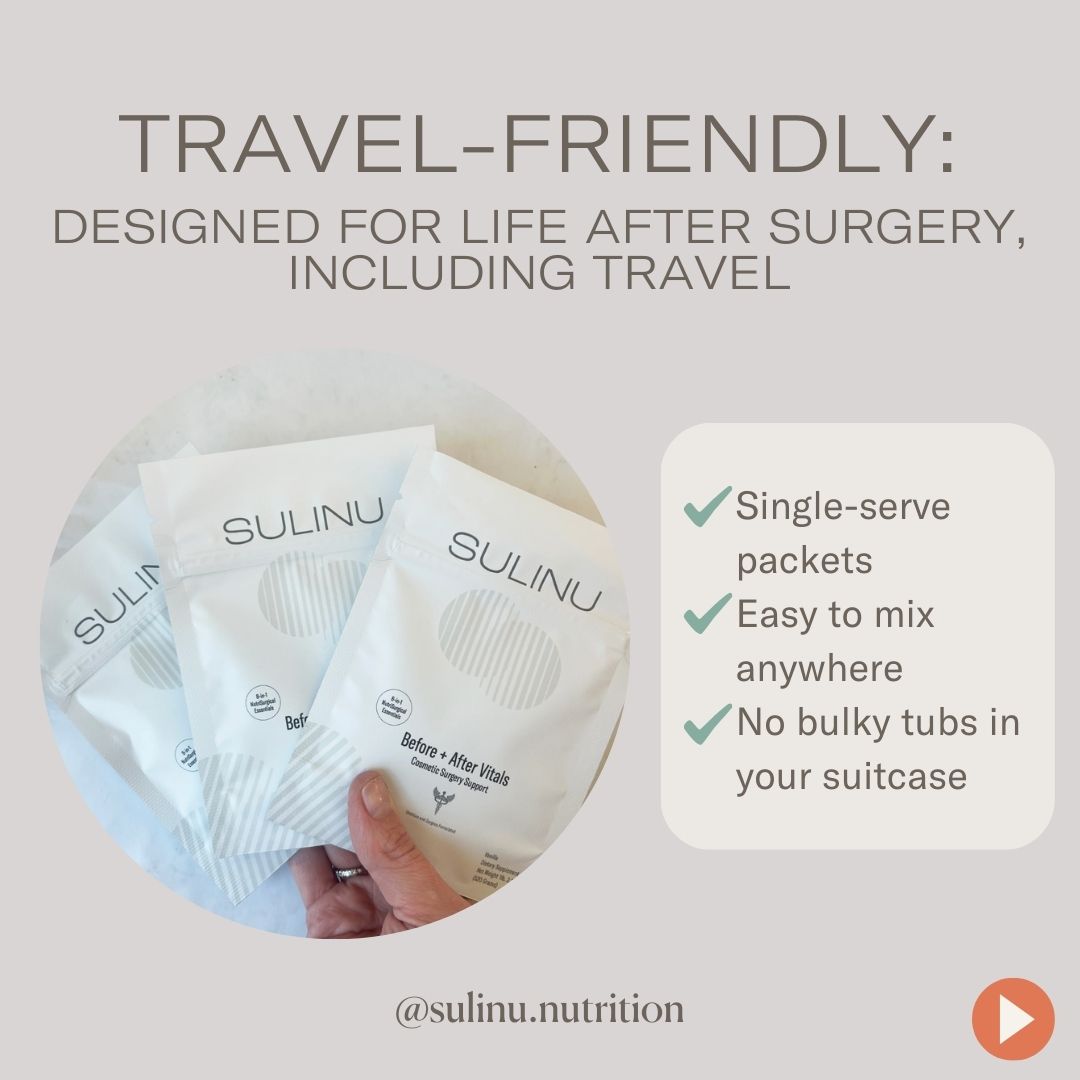
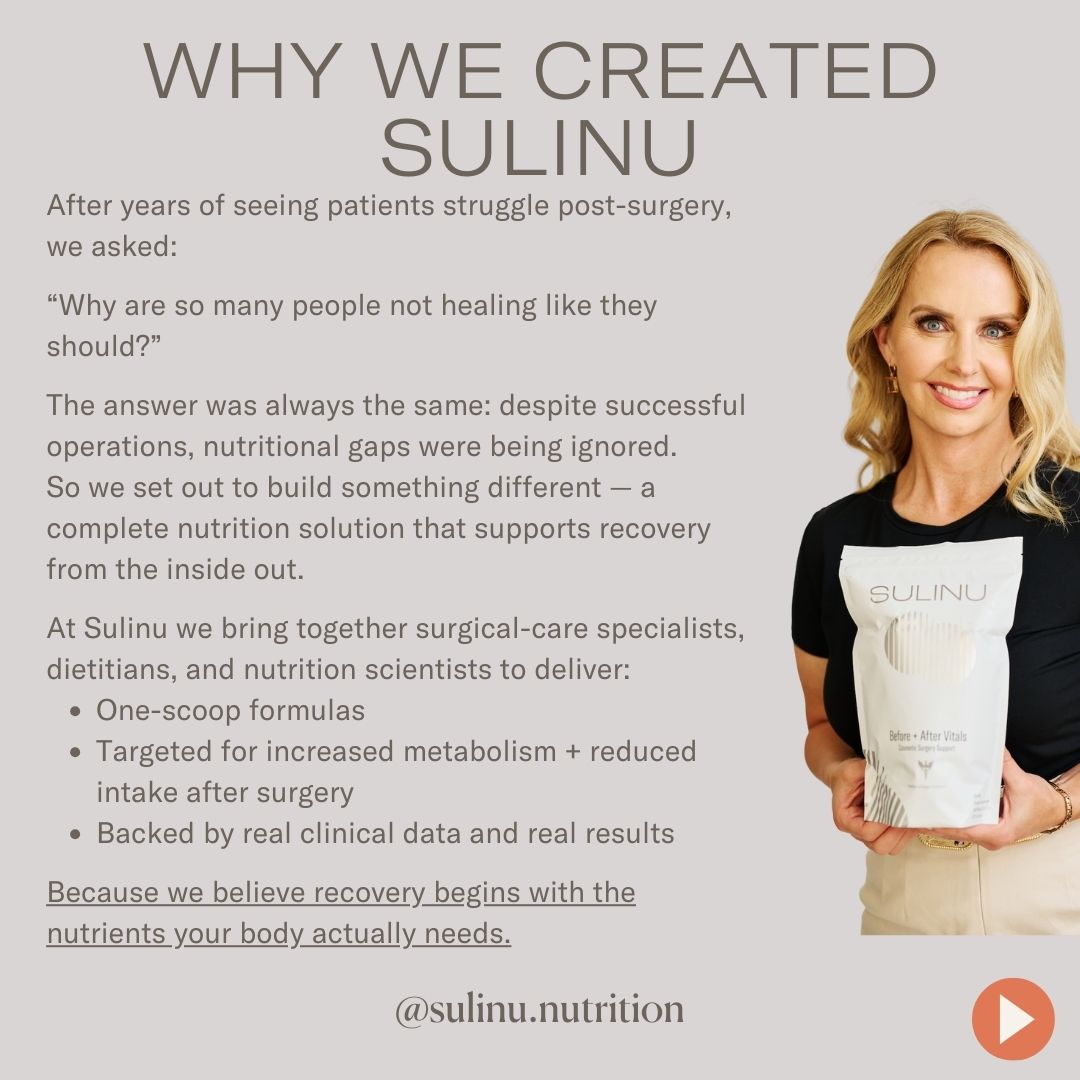
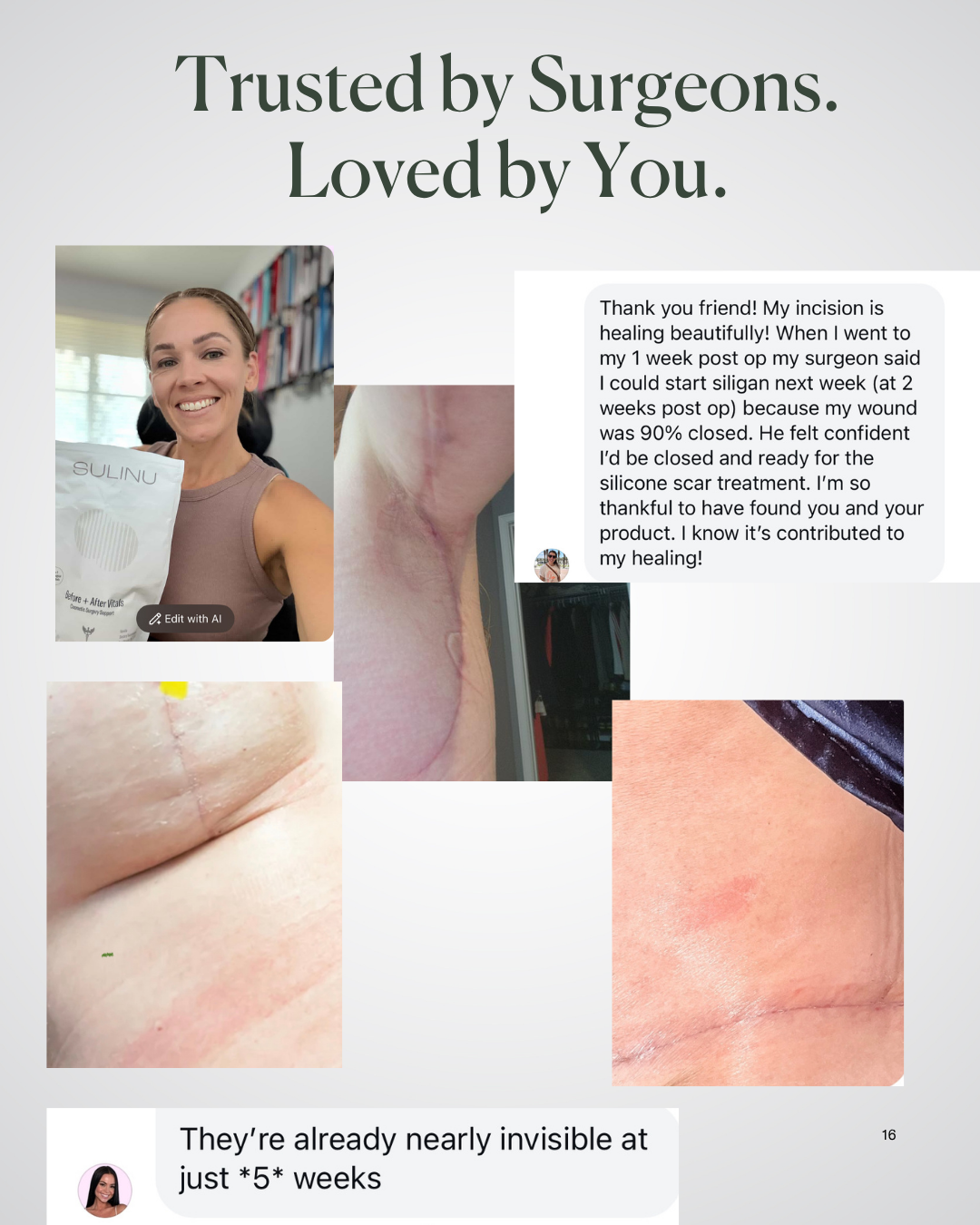

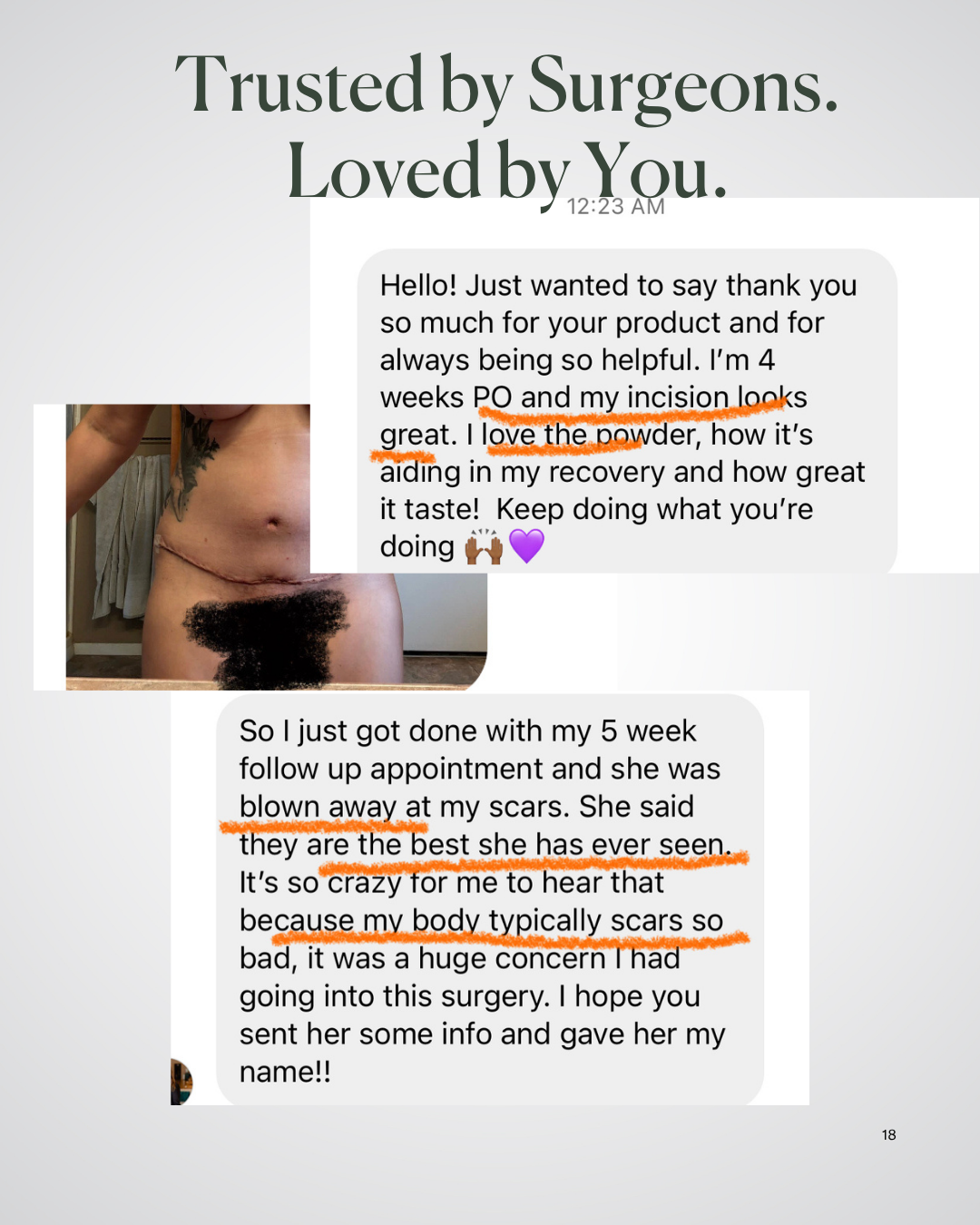
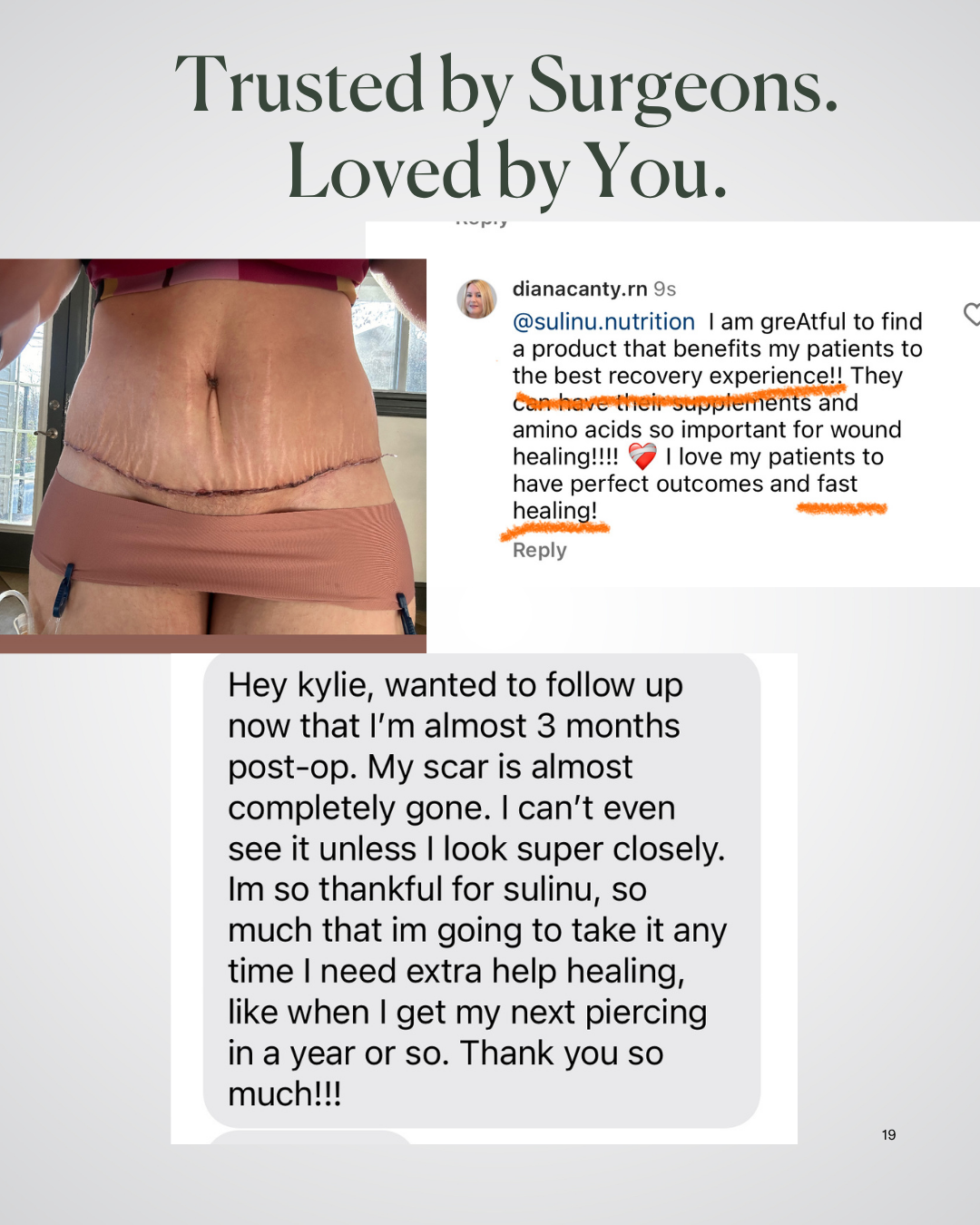
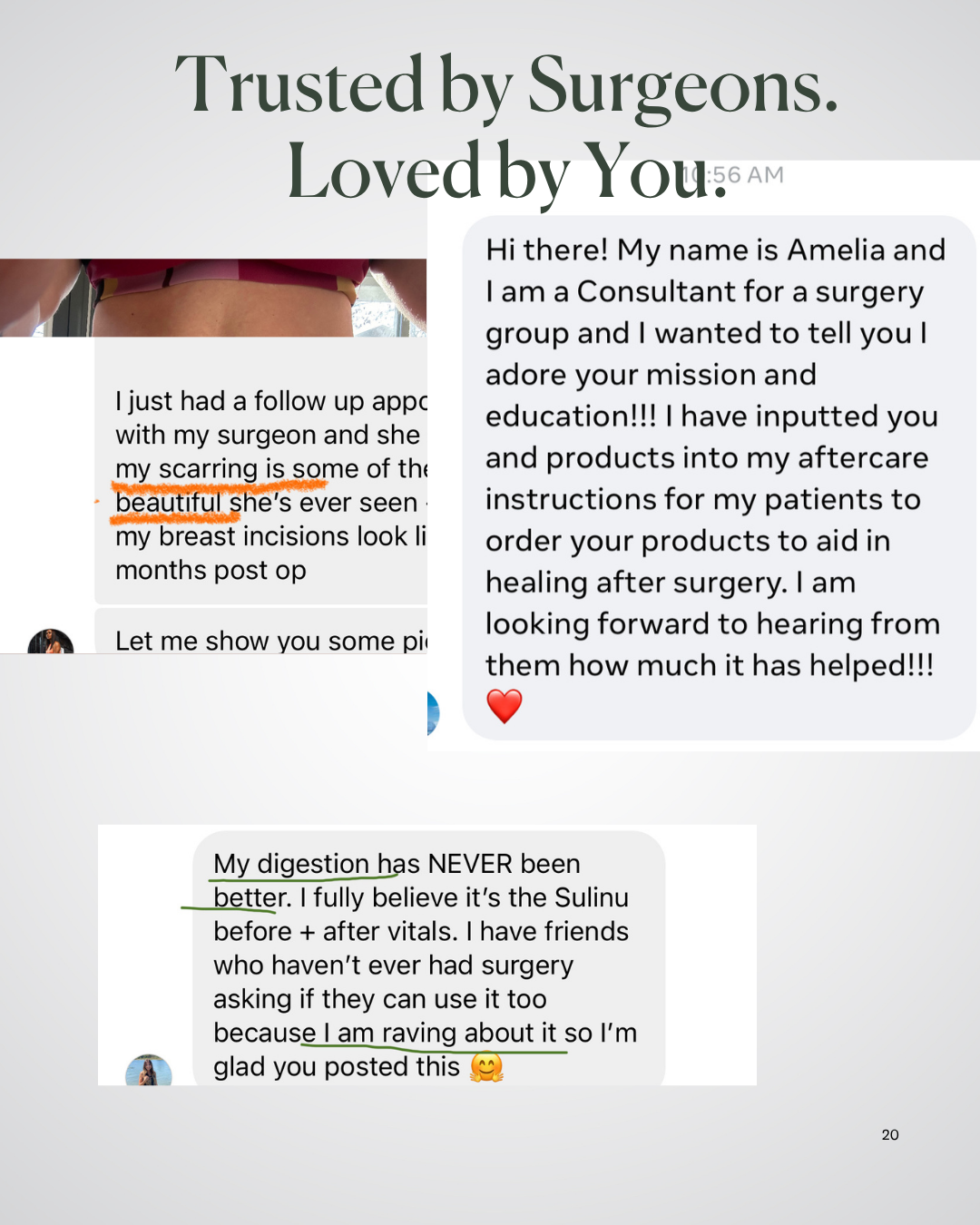
NUTRISURGICAL VITAMIN POWDER -(bag: Vanilla)
**FREE SHIPPING for orders over $150!!**
- 100% Money Back Guarantee
- Discreet Shipping-Your privacy is important
- We recommend 3 bags for any surgery for the best results
This Complete Surgery Powder gives you EVERYTHING you need IN ONE SCOOP.
Pre and Post Surgery Supplements for that near-invisible scar look.
"Can you believe it? [My incision scars] are nearly invisible at just 5 weeks!" -Jessie
Our pre and post surgery supplements are packed with vitamins for wound healing after surgery
- 3rd party tested
- Gluten-Free
- Vegetarian Whey
-
27 Surgeon-Approved Ingredients
- In bioavailable forms
-
5 Patented Ingredients
- Patented is the HIGHEST standard of ingredients
- Faster Incision healing
- Gut microbiome studied
- Clinically tested
- Sourced from Europe and Internationally
- Therapeutic Dosages
Perfect for:
- Before Cosmetic Surgery
- After Cosmetic Surgery
- Slow-to-heal incisions or wounds
- Using a GLP and needing extra nutrition
- Can begin taking at anytime on your surgery journey, EVEN if you are weeks after your surgery! Your scar is healing for a least a year after your surgery date.
How to use:
- Use 1/2 to 1 scoop a day. Max 1 scoop a day for at least 6 weeks postop.
- We recommend 3 bags: Use 1 bag before surgery and 2 bags after surgery
Nutrisurgical Vitamin Powder with Patented, Clinically-tested Ingredients.
All your Protein, Collagen, Amino Acids, MicroNutrients, Synbiotics and Enzymes in ONE SCOOP to give you a seamless recovery after cosmetic surgery.
Note: This product is also commonly used by GLP (Ozempic, Semiglutide, etc) patients to prevent nutrient depletion and Ozempic face
Our Survey Results*:
79% reported a beautiful incision
85% reported a faster recovery
90% liked the taste
X Gluten X Soy X Artificial Colors or Flavors X GMOs
*based upon our postop survey 2024
Introducing BEFORE + AFTER VITALS, the ultimate surgeon-endorsed nutritional supplement tailored exclusively for plastic surgery recovery.
Fears of infection, inflammation, slow-to-heal incisions, and bruising are taken head-on by this super fine, quick-to-dissolve powdered supplement. Add a delicious hit of vanilla flavor to your cold or warm drinks, smoothies, or culinary creations.
1 pouch is 20 servings.
ALLERGY info: Contains lactose. Product was processed in a facility that may also process eggs, peanuts, sesame, soy, tree nuts, shellfish, and other allergens.


